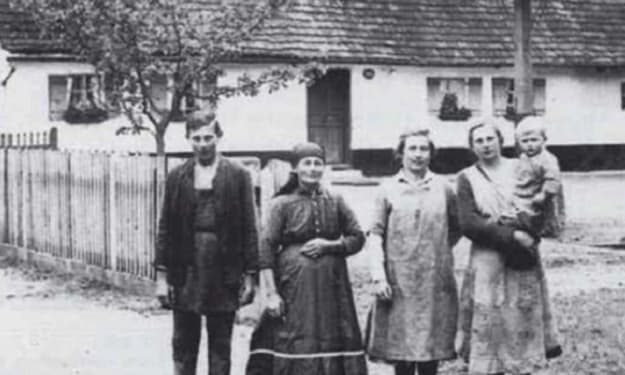The Axeman of New Orleans
The Mysterious Serial Killer Who Terrorized the City's Italian Community

Introduction
The Axeman of New Orleans was a notorious serial killer who operated in New Orleans, Louisiana, during the years of 1918 and 1919. The killer was known for targeting Italian immigrants and for sending taunting letters to local newspapers, creating a wave of terror throughout the city. Despite a number of suspects being investigated, the Axeman was never caught and his identity remains unknown to this day.
Background
The early 1900s was a time of great change and upheaval in New Orleans. The city was experiencing a surge of immigration, particularly from Italy, as people sought a better life in America. This influx of new residents brought new cultures and traditions to the city, but it also led to tensions between the established population and the newcomers.
It was in this context that the Axeman began his reign of terror. The first attack occurred on May 22, 1918, when Italian grocer Joseph Maggio and his wife were brutally attacked in their home. Both were found with their throats slit and their skulls fractured. The couple's heads had been bashed in with an axe, which was left at the scene.
Over the next few months, the Axeman struck again and again, always targeting Italian grocers or their families. In each case, the victims were attacked in their homes at night, usually while they were sleeping. The killer used an axe or a straight razor to bludgeon or slit the victims' throats, and sometimes both. The attacks were brutal and frenzied, and the killer often took jewelry or money from the scene.
The letters
As the killings continued, the Axeman began sending taunting letters to local newspapers. The first letter was sent to the New Orleans Times-Picayune on March 13, 1919. In the letter, the killer claimed that he was a demon from hell and that he would spare anyone who played jazz music in their homes on the night of March 19. The letter ended with the now-famous line, "If you don't, I'll know and I'll take your soul."
The letter caused panic throughout the city, with many people taking the killer's threat seriously. On the night of March 19, thousands of people crowded into dance halls and private homes to play jazz music, hoping to avoid the Axeman's wrath. There were no reported attacks that night, leading some to speculate that the letter was a hoax.
However, the Axeman was not finished. Over the next few months, he sent several more letters to the newspapers. In one, he claimed to be a human being, not a demon, and provided a list of demands for the city, including better public transportation and more nighttime police patrols. In another, he taunted the police and claimed that he would strike again on a certain night. And in a final letter, he claimed that he was leaving New Orleans for good.
Investigation
The police investigated a number of suspects in the Axeman case, but were never able to definitively link any of them to the crimes. One suspect was Joseph Momfre, a local Italian man who had a criminal record and who was rumored to be involved in the mafia. Momfre was arrested in connection with the murders of two grocers, but he was released due to lack of evidence. He was later murdered himself, and some people speculated that he had been killed by the Axeman.
Another suspect was Frank Giordano, a man who had been convicted of a similar crime in New Jersey. Giordano had recently moved to New Orleans and was working as a barber. He was arrested and charged with the murder of Mike Pepitone, a grocer who had been attacked in his home in October 1919. However, Giordano's alibi checked out and he was eventually released.
Despite the efforts of the police, the Axeman continued to evade capture. Some people speculated that he may have left the city or even the country, while others believed that he may have simply stopped killing. Whatever the case, the Axeman's identity remains a mystery to this day.
Legacy
The Axeman of New Orleans has gone down in history as one of the most notorious and mysterious serial killers in American history. The case remains unsolved, and the identity of the killer is still a source of speculation and debate.
The Axeman's crimes had a profound impact on the city of New Orleans, particularly on the Italian community. Many Italian grocers and their families were forced to live in fear for their lives, and some even left the city in search of safety. The killings also sparked a wave of paranoia and hysteria throughout the city, with many people living in constant fear of being the Axeman's next victim.
The case also had a lasting cultural impact. The Axeman's letters, particularly the one in which he demanded that people play jazz music, have become part of New Orleans folklore. The city's jazz musicians even wrote songs about the Axeman, including "The Mysterious Axeman's Jazz" by Joseph John Davilla and "Don't Scare Me, Papa" by Jelly Roll Morton.
Conclusion
The Axeman of New Orleans was a serial killer who terrorized the city of New Orleans in the early 1900s. His brutal attacks on Italian grocers and their families, as well as his taunting letters to the newspapers, created a wave of fear and hysteria throughout the city. Despite the efforts of the police, the Axeman was never caught and his identity remains a mystery to this day. The case remains one of the most notorious unsolved crimes in American history, and the Axeman's legacy lives on in the folklore and music of New Orleans.
About the Creator
Keerthana Thirumalairaj
An Independent Solitude girl, who recently found the interests in writings and converts Facts and imaginations into writings.
Enjoyed the story? Support the Creator.
Subscribe for free to receive all their stories in your feed. You could also pledge your support or give them a one-off tip, letting them know you appreciate their work.






Comments
There are no comments for this story
Be the first to respond and start the conversation.